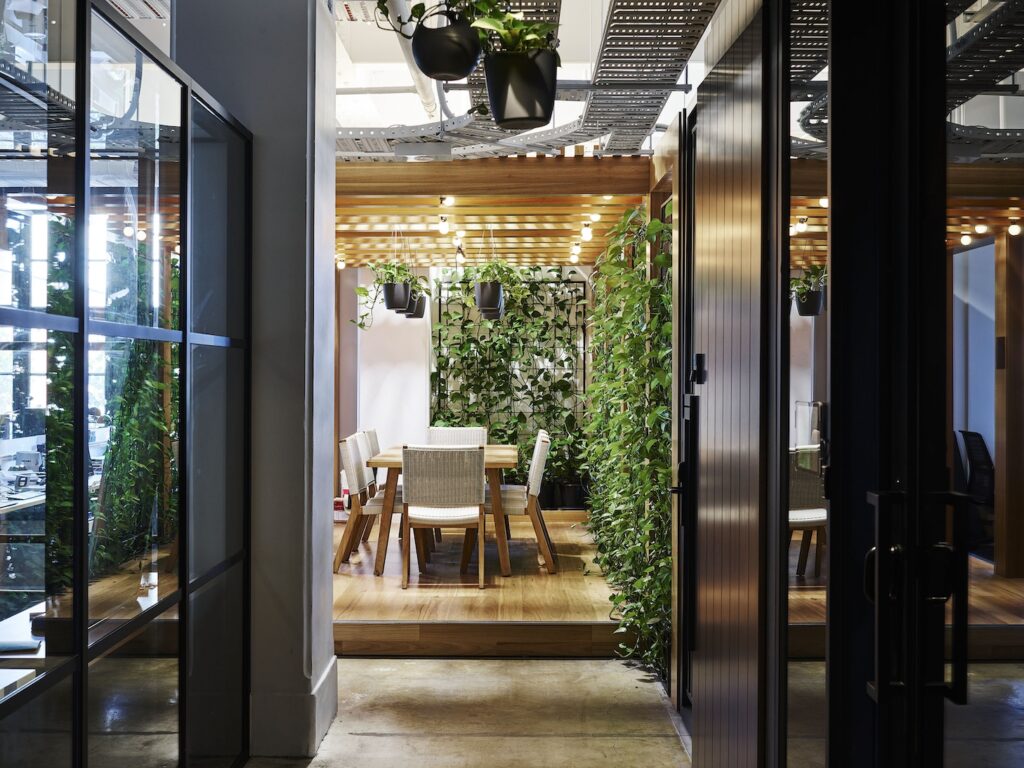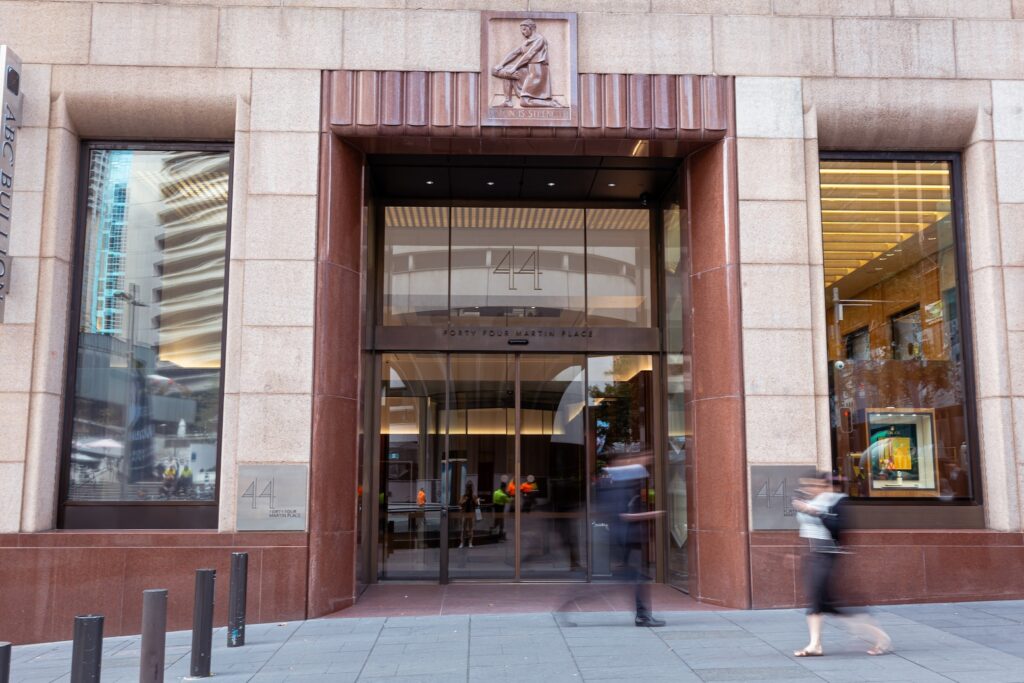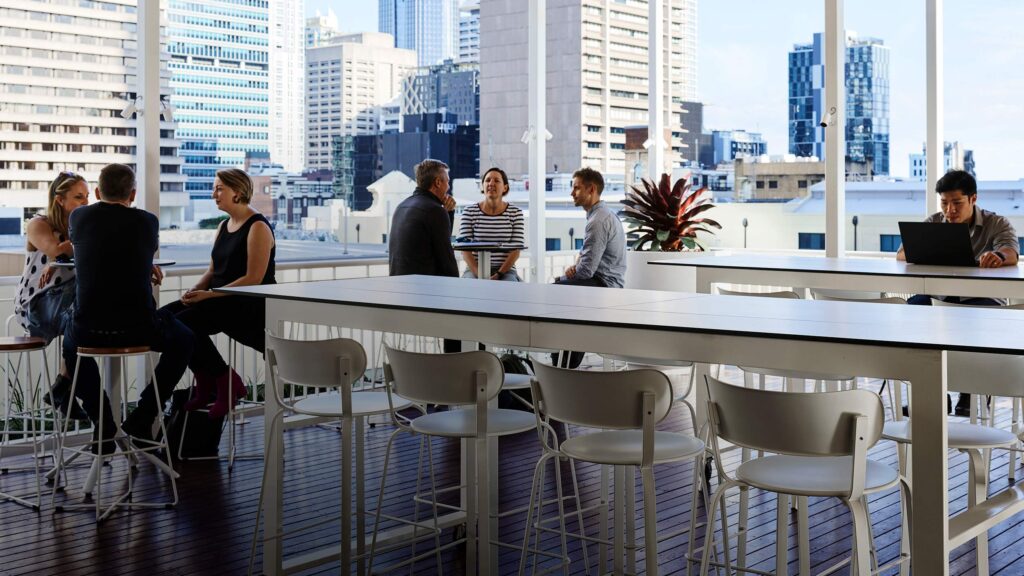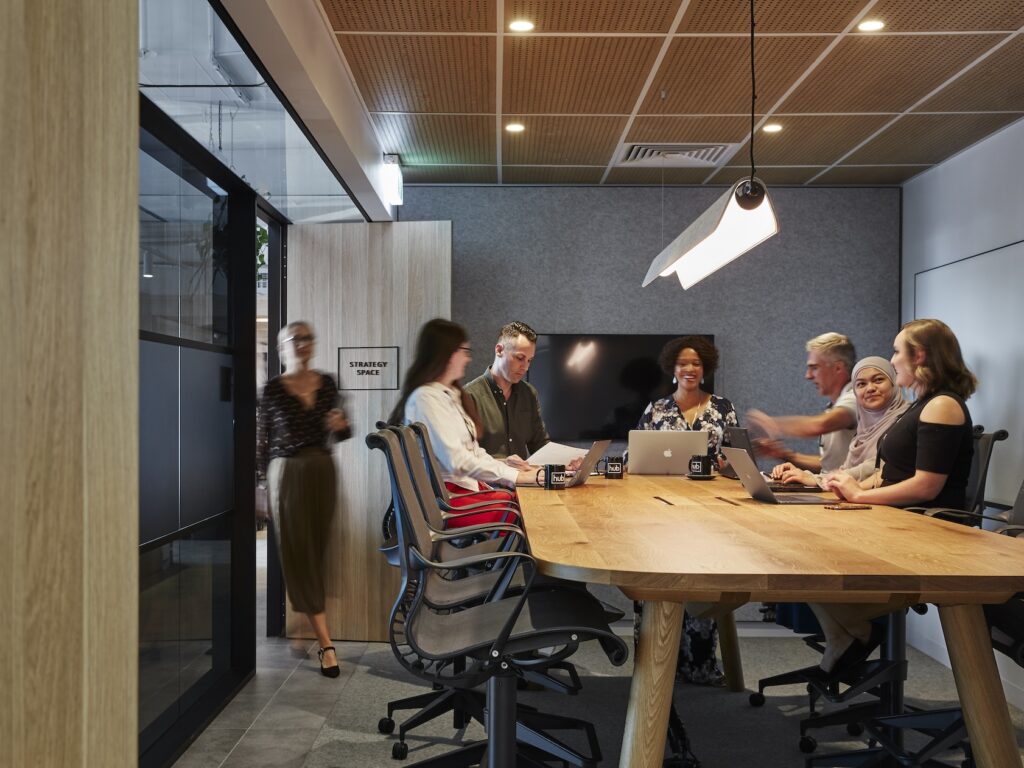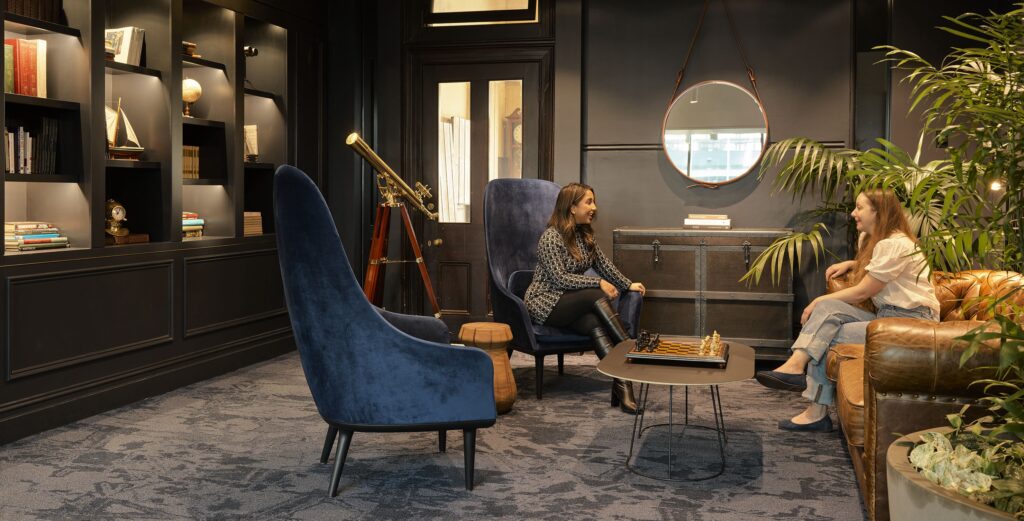Any strategic investment into the design of a workspace should prioritise the needs of its employees – every company’s greatest asset.
A poorly designed workspace will directly affect the productivity and wellbeing of your employees, but a people-first workspace will actively work to aid the motivation and efficiency of any team.
Too often, businesses accommodate their workflow to fit a space, rather than finding the right fit-out for their employee’s unique needs.
With plenty of trending designs to choose from, it’s important to consider the demographics of your workplace and direction of your business before conceptualising its design.
Design with a demographic in mind
An enterprise may have an innovative product or leading technology but a company is only as good as the hands, hearts, and brains behind it – your team is your greatest asset, so it’s crucial you design an office space with them in mind.


Identify current and future demographics for the majority of staff in your company before discussions about floor plans and aesthetics start. According to an annual study by PwC, millennials, born between 1980 – 2000, will form 50% of the global workforce by 2020.
Millennials work differently from their Gen X predecessors – knowing future demographics helps employers design an office space compatible with their long-term team.
Here are some pointers to customise a workspace for millennials:
- Avoid rigid environments:
Millennials are more responsive to relaxed professional environments, and are typically disillusioned with siloed spaces and ways of working
- Incorporate technology:
This tech-savvy generation have a strong affinity with digital platforms. Cater to tech needs with fast wifi connectivity and multiple powerpoint outlets, creating opportunities to work from any corner of the office
- United by purpose:
Millennials thrive in inspiring workplaces that feel like a community. It’s important to remind younger professionals their efforts are contributing to a greater purpose. Your workspace design should serve as a visible reminder that employees are part of a valuable cause and united purpose.
Read more: 5 Reasons Coworking Spaces Are Great For Growing Your Business
Design knowing your dynamics
As businesses shift away from closed cubicle spaces to open floor plans, it can be tempting to adopt a similar design so you can stay ‘on trend’.
A confident understanding of the way your team works together should always precede any considerations of your floor plan or desk arrangements. Before design decisions are made, ask your internal teams and stakeholders to think about the following questions:
– Do our employees work better independently or collaboratively?
An open plan office bids adieu to segregated cubicle spaces and boxed off desks, instead, replacing enclosed spaces with wide, spacious floor plans. Open plan designs intend to promote social interaction, collective discussion and transparency – these spaces are ideal for coworking internally and foster teamwork and collaboration.
It may be popular amongst millennials and design teams, but the open space doesn’t always favour autonomous or independent working styles, and may not be best suited for loud call centre operations or workplaces with minimal collaboration.
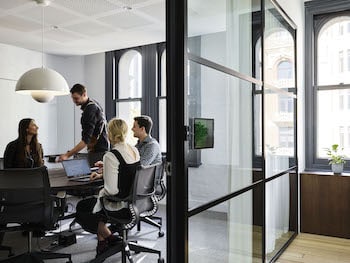

Ultimately, recognising the working patterns of your collective staff can guide your design options.
Striving to balance the needs of independent and collaborative working styles, with spaces dedicated to collective ideation and private working areas, can be a flexible solution for businesses.
– What kind of desk space do our employees need?
Identifying the desks you need should factor into the decisions you make about your office floor plan and layout. Challenge conventions about how a desk in your workspace should look and feel; consider hot desking or coworking as an office solution that may be applicable in your unique work context.
For example:
- In a collaborative office or environment where employees prefer to work on-the-go, setting up hot desks or agile working spaces can cater to different rhythms and requirements
- The type of desks in your workplace can affect your internal meetings – communal tables can foster creative discussions, and stand-up desks accommodate for quick and efficient meetings
- If your team is comprised of interns, freelancers or casual staff, hot desks can cater to different working schedules
Ergonomically, desks provide varying degrees of comfort and flexibility. It’s imperative to consider the health and wellbeing of your employees – adjustable desks can cater to preferences for screen height, privacy, or sit-stand routines, potentially making for a healthier and more comfortable workspace.
Read more: 7 Mistakes Business Owners Make When Choosing an Office Space
Design for cultural growth
Knowing your company’s culture and future direction will influence your workplace design. Capture the best parts of your culture through your design and consider where your company culture can flourish.


For example, plan a customised kitchen fit-out and communal dining area to foster your lunchroom culture or create a space where employees can enjoy a break between tasks.
Ensure your workspace is not so rigid that it is unable to adapt to new cultural norms and activities.
For example, your team may move organically to wanting to spend more social time together – creating a flexible and adaptable space where they can meet casually or for business purposes helps foster and allow this.
Don’t forget the details in your design
It can be easy to overlook certain elements of a workplace design but the details of your office fit-out can carve out a remarkable difference. Here’s a basic checklist:
- Opt for Natural Lighting:
Natural lighting can positively impact your team’s productivity and quality of health – ensure your space is designed to maximise incoming light, or opt for soft and warm artificial lights to decrease the pressure of harsh lights.
- Declutter:
Cultivate an efficient working space – decrease clutter by utilising cabinets and shelves, and ensuring desk space is maximised.
- Regular Health Checks:
The regular upkeep of technology ensures your wifi and facilities are working at optimal performance. Have systems in place to ensure your kitchen, stationery and printing supplies are stocked.
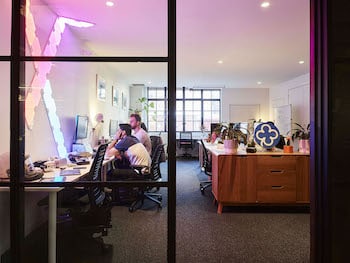

There’s little doubt that the design of a workspace directly implicates the productivity, motivation, and wellness of a team – businesses should be challenged to retain their employees and attract top talent by prioritising people in workspace design.
Businesses have a direct opportunity to foster an enjoyable company culture, both now and in the future, through unique workspace design.
The crux of finding the right design for your workspace lies in the flexibility it can provide to cater to different working styles, needs and preferences.
Need help creating and designing the right office for you?
It can be difficult to find the right balance in your workspace design, but with Hub Australia’s bespoke solution, you can customise a coworking space to be the perfect fit for your team, in locations such as Sydney, Melbourne, Brisbane and Adelaide.
Find out more about Hub’s custom spaces in growing coworking communities, to help suit your business needs.


